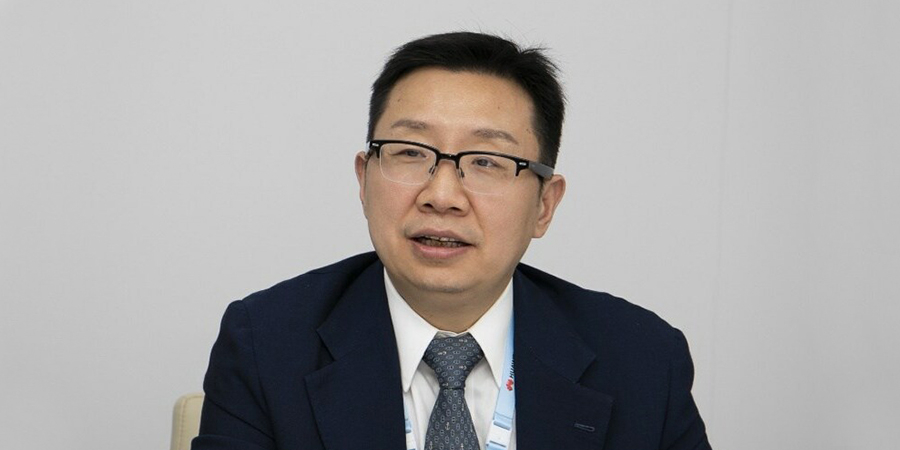Huawei's Smart Road, Waterway and Port BU showcased its latest Smart Road and Smart Port solutions at the Mobile World Congress (MWC) 2023. 5G solutions were commercially deployed and have been operating for over a year at Tianjin Port.
Hosting a media roundtable to highlight its practices in smart port development, Yue Kun, CTO of Huawei's Smart Road, Waterway and Port BU, addressed some of the pain points of port operations and how Huawei’s Smart Horizontal Transportation Solution is facilitating large-scale, commercial and regular operations. The Tianjin Port Second Container Terminal uses the solution to build a Smart Port powered by 5G and L4 autonomous driving. A fleet of 76 intelligent guided vehicles (IGVs) has been routinely operating autonomously for over a year, relieving shortages in drivers and increasing the port's efficiency.
"Ports are a vital link in maritime transportation, connecting trade and supply markets across the globe. Building more efficient smart ports is becoming an increasingly pressing requirement for the global supply chain. Section C Terminal of the Port of Tianjin has now been operating stably for over one year. This proves that 5G and L4 autonomous driving have already been successfully adopted by industries in China and are creating true commercial and social value," says Yue.
Explaining to the media the success of the Tianjin port, Yue said it was the result of multiple factors: timing, geolocation and the vision of the people in the management.
“This project had very good timing because when Tianjin Port Group wanted to build this new terminal, they were looking for the most mature and the best technologies. At that time, 5G AI, autonomous driving was all coming into place,” he said.
“The port industry needs to consider the future 10 to 20 years or even longer when they decide on which technologies to adopt as it becomes difficult to switch to a different technology halfway through their operation. So they had to use the most mature technology rather than a new one, and 5G AI and autonomous driving were all mature enough for them to deploy.”
“Geolocation is significant in the port business. Almost 90% of global trade runs across maritime transport. In China, Tianjin Port location is of strategic importance as it has trading relations with over 800 airports across the world. Applying digital technologies to improve the operational efficiency can contribute to improving the global logistics efficiency,” Yue continued.
Alluding to the vision of the Tianjin Port management, Yue said, “It had a lot to do with the will of the management team of Tianjin Port. They decided to deploy these technologies, but it's not enough to have these technologies alone. The management philosophies, the process improvements, and the changes necessary on the equipment were all brought together so that we could commercially deploy the solutions in the terminal of Tianjin Port to achieve high efficiency and low energy consumption.”
He said that Huawei intends to visit different countries to assess the use cases of digital technologies to solve the problems of such industries and to work together. Huawei has different smart infrastructure solutions for such industries that can be applied, such as smart ports, smart tunnels, smart roadways and many more.
Regarding Telecom Review's question on the kind of collaboration that Huawei adopted for the project, Yue said, "All of the collaborations that we have with partners are organized or managed by our customers. There are multiple partners involved for every component and every product. What customers need is a production system that can run 24/7 at low cost and high efficiency. It's not something that they just want for showcasing. They need to have control over these components for the entire system. Huawei works with different partners to look at the project from a system engineering point of view.
“A very important point for our customers is the decoupled ecosystem, as it will allow them to work with various parties. Using decoupled ecosystem, they were able to reduce the total cost of the solution by over 50% compared to a traditional automated terminal solution.”
"We need to correctly understand the challenges that our customers face, find the mature technologies for them and cooperate openly through a decoupled ecosystem to solve their challenges to deploy a production system, which I believe, is the biggest value from digital transformation to these industries. I'm confident that these kinds of solutions will be deployed in a wider scale in the industry," concluded Yue.
As a major modern port, the Port of Tianjin boasts 300,000-ton-class terminals with a channel depth of 22 meters. It has 213 berths of various types. In 2022, its container throughput exceeded 21 million TEUs, ranking among the top 10 ports worldwide. Huawei provides the bottom layer ICT infrastructure where all stakeholders and encouraged to be involved to work in collaboration.










